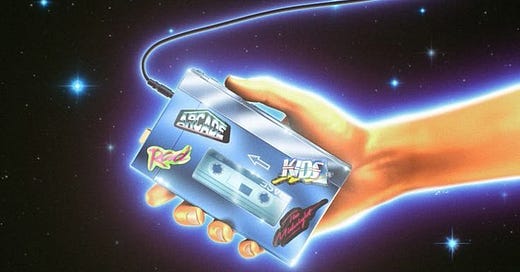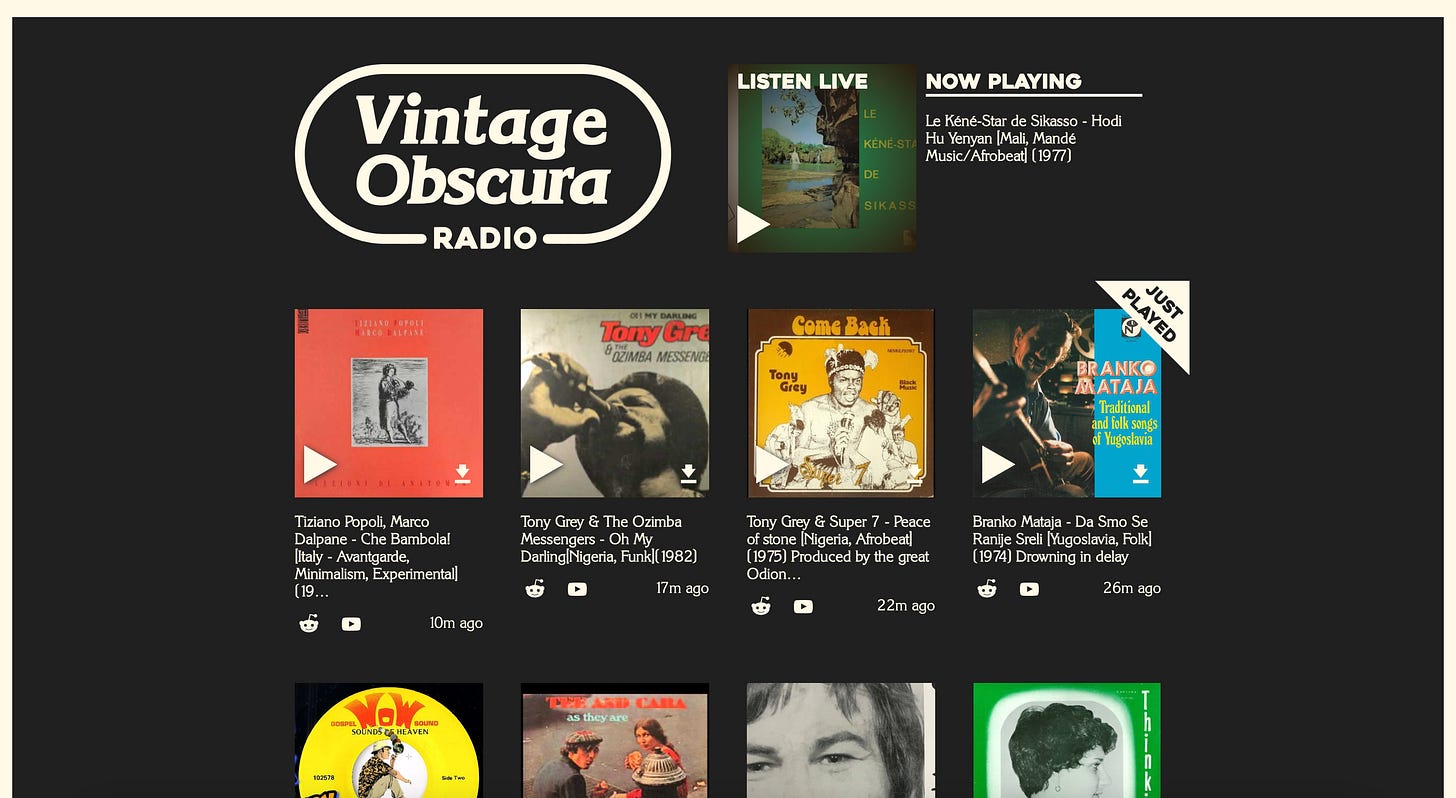From vinyl to streaming to whatever TikTok is doing to our brains, every shift in technology has reshaped how we find and experience music. The tools evolve constantly, and so do the ways we stumble across new songs.
Lately, though, discovery has felt frustratingly impersonal. Spotify playlists cycle the same five tracks, YouTube pushes sped-up remixes of songs you've already searched, and TikTok floods us with snippets engineered solely for viral moments.
But music discovery should feel more intimate. It should be about wandering, getting lost in sounds you didn't expect, and unlocking something new within yourself.
Today, I’m sharing a few sites that bring back that intimate, personal experience—sites that build immersive worlds and make finding music genuinely fun again. Plus, I'll share some recommendations from my own explorations.
Gnoosic
Gnoosic offers a beautifully simple approach to discovering music you'll actually enjoy. Just enter a few artists you love, and it provides tailored recommendations that fit your specific niche. Its minimalist, modern interface and impressive accuracy kept me exploring combinations of artists for hours, finding hyper-specific vibes.
The creator of Gnoosic also links out to some of his other projects, like MusicMap. That one lets you search an artist and gives you a full branching map of similar sounds. You can click through artist after artist, falling down these tiny rabbit holes until you build the exact vibe you’re looking for.
This song I found by combining Lorde, the 1975, and Djo.
Radio Garden
Radio Garden is the ultimate effortless music discovery tool. Spin a virtual globe, pick a city, and instantly stream live radio from anywhere on Earth. I've lost hours clicking through stations in cities I've never heard of before.
One of my favorite features is “Take a Ride,” which randomly bounces you between different stations. I usually spend a few minutes finding a vibe I like, then leave it running while I’m cooking dinner. I’ll put on a Chicago station because it makes me feel a little more connected to what’s happening around me. Other times I’ll pick a random city just to pretend I’m from there, like I’m soundtracking some movie version of my life. I also like hearing the broadcast hosts between songs. I fear we need to bring back radio instead of the half-assed Spotify mixes we keep pretending are good — it just feels more personal and curated.
There are curated playlists of radio stations built into the site too, like Time Travel, Global Jukebox, Independent Sounds. Through one called Curiosa Cabinet — “a collection of weird and unusual stations from around the world” — I found Vintage Obscura Radio, probably one of my favorite discoveries. It’s tied to the /r/vintageobscura subreddit community, where over 100,000 people research and dig up forgotten tracks that had under 30,000 views before 2000. The station loops these finds nonstop, and I’ve come across some incredible old songs this way.
Poolsuite
Poolsuite is less about discovering every type of music and more about stepping into a full digital world. It started as a tiny Tumblr project back in 2014, and now it’s a full-blown retro-futuristic internet radio station, designed to feel like you logged onto some sun-drenched vintage desktop.
The UI is part of the experience. You drag around windows, open up fake apps, and click through curated mixtapes like you’re on vacation in 1984. The worldbuilding is what makes it stand out. It’s not just a site you use, it’s a place you hang out in.
Music-wise, it leans into a pretty specific lane — sunny synths, soft disco, indie pop, and vintage-feeling funk. But even if the genre isn’t always what you’re looking for, the whole experience reminds you that digital spaces can be more creative, immersive, and weird than most apps make them now.
It’s proof that good design still matters and that finding music doesn’t have to look or feel like a spreadsheet.
Radiooooo
Radiooooo lets you time-travel through music. You pick a country, pick a decade, and it streams songs from that time and place.
The design is colorful, clean, and fun to use. The whole map lights up as you move around, and you can set the mood depending on what you’re looking for — slow, fast, or weird. Sometimes I’ll pick a random country in the ‘60s or ‘80s just to see what pops up. It’s a reminder that music discovery doesn’t always have to be about finding what’s new — sometimes it’s about finding something old that feels new to you.
There’s a lot more under the surface too. Each song links back to the person who found it, and you can dig into their full playlists if you want. You can post your own song submissions, like and interact with other people’s finds, or even set the radio to “2078,” if you want to see what the future sounds like.
Radiooooo makes it easy to get lost without making it feel like work. And honestly, that’s how I rank whether a music site is good or not: how deep it lets you go if you want to.
EveryNoise
EveryNoise is a scrollable list of basically any genre you could possibly think of. For each genre, there’s a full map of artists who fit that niche, plus a Spotify playlist built around it. You can click into any genre or artist to hear a sample before diving deeper.
Sure, the interface is a bit rough around the edges, but that’s part of its charm: it forces you to really engage with the process rather than just passively scrolling. It’s less about spoon-fed recommendations and more about letting your curiosity lead you down unexpected rabbit holes.
It takes a lot of scrolling, a lot of trial and error, but if you’re patient, you end up finding sounds you never would’ve landed on through a regular recommendation feed.
MusicMap
MusicMap is for when you want to see the bigger picture. It’s a huge visual map of how popular music evolved — from the early roots of jazz and blues to the tiniest micro-genres floating around now. You can click into different styles, see how they connect, and follow the path of how one sound led into the next.
Each genre comes with a short excerpt that explains what it actually is. Every entry links out to a playlist too, so you’re not just reading about a sound, you’re hearing it.
The design is simple but clean, and it feels more like wandering through a history you actually care about instead of sitting through a lecture. It’s another one for deep dives — not something you skim, but something you sit with when you want to understand where the music you love actually came from.
We don’t need less technology — we just need better ways to use it.
Discovery gets interesting when you’re the one curating it, not just letting an algorithm hand you whatever’s trending.
There’s a whole side of tech that’s still about exploration, creativity, and worldbuilding — you just have to know where to look.
These sites aren’t just tools. They’re reminders that music discovery can still feel personal, surprising, and a little chaotic — the way it’s supposed to.
<3 brooklyn @ byte-sized beats












tight, now i gotta make sure my music is on all these sites lol